Understanding neuroplasticity and how brains adapt
Dr. Erin Bigler has been studying the brain’s adaptability for more than 30 years. He retired in August 2018 from Brigham Young University, where he was a professor of psychology and neuroscience since 1990. His career itself spans nearly 50 years; he served as the President of the International Neuropsychological Society, and is a past president of NAN. Along with having written several neuropsychological tests, he has authored and/or edited 11 textbooks and published more than 300 peer-reviewed articles. Managing Editor Matt Villano recently caught up with Bigler over Zoom to talk about the future of brain science.
BrainWise: What interests you about neuroplasticity?
Dr. Erin Bigler: The brain is an experience dependent organ and it’s designed to adapt. And you have a hundred billion neurons, and those neurons all connect. They create these amazing brain networks that carry out a hundred trillion or more operations every second. This amazing complexity also tells you that in the face of amazing complexity, there have to be adaptive mechanisms; there have to be ways that the brain is updating and learning and modifying and pulling in different networks to function. Very early in my career, I started to study traumatic brain injury and neurodevelopmental disorders and how the brain would adapt over time to those kinds of injuries or different neurodevelopmental errors or mechanisms that altered brain structure and function.
BrainWise: You noted the brain can adapt over time. How does this compare to plasticity?
Dr. Bigler: Plasticity is probably not the correct term. It’s really adaptation. You were born with more neurons than what you are going to be utilizing as the brain emerges developmentally. In part, we believe this is related to the fact that in our hunter-gatherer and earlier heritage, the birthing process and early infant and childhood existence was an environment where there was very likely to be an acquired injury. And for the organism to live and last and thrive, it would have to be able to adapt. What happens from a brain organization standpoint is, you have these early brain cells and they connect with all kinds of other brain cells, but ultimately there’s a primary pathway that becomes established. That primary pathway is basically what we carry on with us into adolescence and adulthood. We can all sort of appreciate this to a certain extent because if you’re learning a new skill like bouncing a ball, you can almost feel your brain establishing new pathways. But once that skill level is acquired, then there’s a dominance of pathways in the brain that are conducting that.
Now, if the brain is injured, there’s still those pathways that are in the background that were there in the beginning. They’re still there. Those pathways are activated if you have an injury and then there’s this recovery. But there’s a price to pay. There is always a price to pay. So you rob Peter to pay Paul. By that, what I mean is you never get back to precisely where you were with regards to function and capability. Of course this also depends on the nature of the injury, the pathology and all those kinds of things. There are certain areas of the brain that are hardwired. Certain visual centers, sensory centers, motor areas, and language receptive and expressive areas. Those areas often show the least amount of plasticity that occurs. It also relates to when the injury or the pathology first occurs.
There’s a series of classic studies that were done in the early part of the 20th Century by a psychology professor named Karl Lashley. And he took infant rats and lesioned different parts of the brain. And part of the amazing aspect of that was these animals would recover many functions quite well. But it had to be a very early lesion, a very early disruption so that the brain developed around it. If you did similar lesions in the adult rat, it had a different outcome. There was a greater potential for this adaptation. And he coined a term that we still use today: Equipotentiality. Some brain cells can function in multiple, multiple dimensions, and they get pulled into the learning process and then that becomes the primary function of those cells. But they had the potential to do something else and something quite different. It just depends on the environmental stimulation, the amount of stimulation, and all that goes on when the brain can be most adaptive. As you age, you lose some of that plasticity capacity.
BrainWise: We’ve talked about how the brain recovers from injury. What about how the brain recovers from genetic error?
Dr. Bigler: In studying traumatic brain injury, as we started to engage in systematic research and we started bringing together what were considered to be neurotypical control subjects, that’s when we started to discover some very substantial anomalies. With one case study a child had an in-utero stroke that was literally unknown to the mother. This child was being recruited as one of the neurotypical and we found in MRI that the child was missing an entire hemisphere and had no outward sign of that type of pathology. Another case was an infant that had what’s called an occipital encephalocele, which is part of the development of the visual cortex outside of the skull. There was literally a sac that developed outside his skull and he required neurosurgical treatment to remove it. The treatment totally obliterated the visual cortex, yet this child was able to read, and this child went on to graduate from college. Some of these very early anomalies and or acquired injuries, the brain has this capacity to shift. Remember the term I used: the equipotentiality. Areas that were not necessarily designed for language or executive functioning or these other neuropsychologic neurocognitive functions can adapt, and it’s as if there wasn’t an injury.
BrainWise: To what extent does equipotentiality something that we only see in the brain?
Dr. Bigler: The brain is unique. It’s considered the most complex biological organ and system in the universe. It’s very different than the lung or the liver or the kidney. And those have very dedicated purposes and functions. In contrast, we always talk about the brain in terms of its multi-modality capacity, that it can function in amazing integrative ways, and it controls all aspects of experience and all sensations and our response to them. You can grow back liver cells. That’s not true in terms of brain injury, although there are certain areas of the brain that do participate in what’s referred to as neurogenesis. That’s the growing of new neurons. There is some neurogenesis that occurs over the course of our lives, but the major aspect of cell development is in utero, and you’re essentially born with the full complement of what brain cells you’re going to use and develop.
Here’s another analogy. At birth, head size is about 25 to 30% of its adult size and that’s so the head can of course come through the birth canal. But by Year No. 1, that smaller head is now the bobblehead that we all love and enjoy. Little kids, as they’re starting to walk, have this big head on this smaller body because now head size is 75 to 80% of its adult size. And by the time that child is four or five years of age, you’re approaching 95%. And then the peak is somewhere around seven, eight years of age. This means the brain is developing at this remarkable rate. As the brain develops, it is laying down pathways. There’s this adaptive process that’s happening every moment of your life, but it’s especially impactful in the first few years of life. Part of that is setting the stage for whatever plasticity may come down the road.
BrainWise: How can external factors affect neuroplasticity?
Dr. Bigler: You’ve probably heard about raising rats in enriched environment and then raising them in impoverished environments. You’ve probably heard of the studies of controlling nutritional factors. Environmental complexity, the opportunity to exposure to environmental complexity, nutritional and health factors are huge, huge elements to maximizing brain development. The literature’s very clear here that socioeconomic status plays a picture, access to education and educational opportunities.
Let’s go back to that developing brain. Your brain is 25% of its adult size at birth. A major part of that growth is myelination, the growth of white matter in the brain. Gray matter gets pruned back, and all of that is going on in the context of the experience, dependent adaptation of the brain. What happens if you delay positive enriched environments until the child is five or six years of age when they start kindergarten? Well, the answer should be obvious: You’ve missed all of that equipotentiality aspect of brain development because you haven’t allowed that infant brain to be in the best optimal environment for stimulation, growth, molding, pruning, etc. This is why programs like Head Start are so important.
Nutrition is important, too. We know that if you have suboptimal nutrition, brain growth is different. If you have an impoverished environment, brain growth is different. People track “adverse childhood experiences,” often abbreviated as ACE. It’s a huge area of neurodevelopmental and neuropsychological research. If you have a stressful environment, stress alters the development of the brain. Stress limits the adaptability of the brain. And now you get into this interplay of, if you have an impoverished environment and you have a stressful environment both emotional as well as physical, it changes the brain as well.
We talked about how we have a hundred billion brain cells. There’s even more than that, because we also have glial cells, the supportive cells that are in the brain. All these cells have to get oxygenated in glucose-laden blood. So you have a microvasculature of the brain that’s just as complex as the neuronal complexity of the brain. Well, what does that mean? Cardiovascular health is equal to cerebral vascular health. And one of the very best things you can do from an aging standpoint and for helping your brain recover from injury is having good cerebral vascular flow. That tells us exercise, depending upon what the level of injury and the other problems are, is a key element.
The nutrition aspects of this are critical as well because injured brain cells may actually require different energy levels. This explains why when someone is rehabbing a brain injury, there’s typically a component that is focusing on physical health, wellbeing, nutrition, activity.
The brain is this experience, dependent organ that’s always adapting; and it has to be stimulated.
Passive stimulation, like simply watching TV, doesn’t really do anything in terms of this active adaptive process. This is where cognitive rehabilitation and the emotional support challenge kinds of therapeutic activities becomes so important—because it is assisting the patient with being active in attempting to change and alter how their brain is functioning.
BrainWise: What gets lost in adaptation?
Dr. Bigler: Think about the inside of your brain for a minute. Let’s say the primary pathway for carrying down a particular function is neuron A, and it projects to neuron B. So in order to complete this one particular function, you go from A to B. It’s a straight-line connection that’s fast. Everything in neural processing speed is happening in milliseconds. But after a Traumatic Brain Injury, the pathway gets rerouted, so neuron A now projects to neuron C, which projects to neuron D, which projects to neuron E, and then that projects to neuron B. You’re still going to be able to carry out that function because you can still get to the B neuron. But notice how many more steps you need to get there—it’s going to take longer. This one of the things that we see in traumatic brain injury—that the neural conduction time is slowed down. Remember what I said at the beginning: there’s always a price to pay. The price to pay here is in the aging process. What happens in the aging process is, you slow down. And as you slow down, that’s a neural speed issue. If you’ve already had an injury and now you’re aging and slowing down, now you’ve got a real problem.
BrainWise: Our cover feature is written by Helen Santoro, an incredible woman who is missing part of her frontal lobe. She’s an accomplished writer. She also clearly has had some serious adaptation occur in her brain. How is she able to do what she does?
Dr. Bigler: This all comes back to the equipotentiality paradigm. Sometimes, a major distinct lesion or abnormality forces the brain into making all these adaptive pathways. I like to use roadway analogies, and it’s clear her brain has rerouted. There are a few areas of the brain that are hardwired and one of those has to do with language. To use the roadway analogy again, there’s a superhighway between a part in your temporal lobe and a part in your frontal lobe that connects words and meaning and allows you to engage in expressive language. If that superhighway is damaged or dysfunctional, your brain must go through those multiple-layer connections. You’ve probably seen these beautiful images of what’s called diffusion tensor imaging tractography, where you see all the brain networks. Well, you can go from point A to any other point in the brain. It’s like the roadmap of North America. You can go start anywhere and go anywhere else in North America. The brain is the same way. Depending on where you start and where you’re headed, you might run into superhighways where the processing is going to be quite efficient, and then you may run into other areas where you must use street roads, and it’s slower and less efficient.



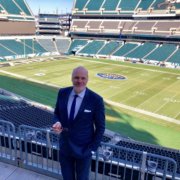
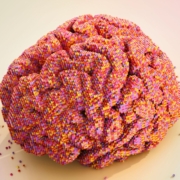
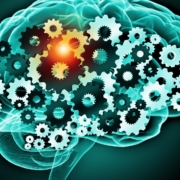
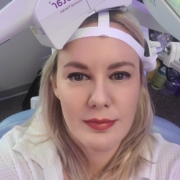
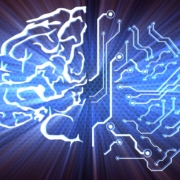


Thank you professor